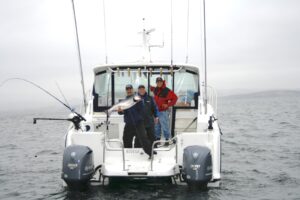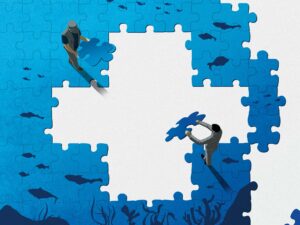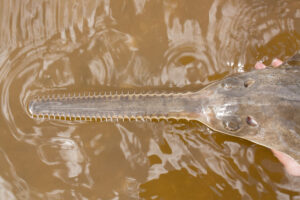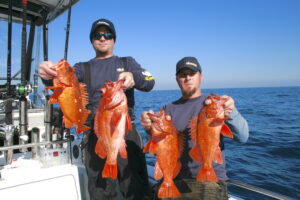
A few years ago, I am not sure that I would have ever contemplated writing about this subject. Since then, however, we have learned a great deal about the climatic and environmental issues that face us. And a big part of the problem and the solution can be found in the ocean. One just needs to have a great deal of ingenuity, understanding of the ocean processes, and know how the carbon cycle works.
I’m not trying to preach, but I do think that all folks need to be conscious of our impacts and do what we can to mitigate them. This is one way to do that and it has been right in front of us for a long while and it is ultimately good for fish.
Even if one thinks that climate change is part of a natural cycle, and certainly part of it is, there is one element of the changing environment that is very measurable and can be reversed. We know that the ocean is becoming more acidic. It is becoming more acidic because the ocean has absorbed and continues to absorb around 30 to 50 percent of carbon dioxide emitted from burning fossil fuels. The dissolved carbon forms carbonic acid which lowers the pH of the ocean.
Is this a problem for those of us who like to go after a variety of gamefish? Well, yes and no. For the most part, adult fin fish are not yet impacted by the increased acidity. However, there has been some research showing impacts to larval and juvenile fish. We also know that any organism that has an exoskeleton will have problems forming that skeleton in a higher acidity environment. Think zooplankton, which form the base of the trophic pyramid, or shrimp and krill. If the acidity impacts this part of the ocean environment, then we will see cascading failure. We have already seen impacts to a variety of corals.
Vegetation Balances the Carbon Cycle
We know that photosynthesis takes up CO2 and breaks it into carbon and oxygen. In the ocean, plankton and a variety of seaweeds do the same thing forming a natural carbon cycle. So, why not help this process along and remove and sequester carbon naturally? That is what a Maine company is doing and doing it without a lot of technological machinery.
Running Tide started as an oyster aquaculture company and has developed the process for carbon sequestration which CEO Marty Odlin started to think about in 2010.
Kelp, although it is technically not a plant but an algae, is one of the fastest growing organisms. Some varieties can grow half a meter in a day. They get their energy through photosynthesis which means they gobble up a lot of CO2.
Running Tide has taken it to the next level.
They developed a process of using buoys comprised of compressed forestry byproducts coated with calcium carbonate, such as limestone, for alkalinity and seeded with kelp. The free floating buoys are deployed by the thousands in strategic locations with deep water. The buoy suspends the growing kelp as it reaches its maximum growth potential.
While the kelp is growing, the calcium carbonate material (limestone) is dissolving, and over time, the buoy, initially a source of buoyancy, takes on water and eventually becomes a source of ballast — at which point the entire assembly, kelp and woody biomass, sinks and sequesters the carbon. In the company’s own words, the carbon has been moved from the fast cycle to the slow cycle. They have substantially high goals and are aiming to scale up to giga-tons (a billion tons) of carbon removal in 10 years.
What Running Tide is doing essentially reverses the burning of fossil fuels. If we go back to the beginning of Earth as we know it today, there were hundreds of times the amount of CO2 in the atmosphere. One of the only organisms that existed was a green algae in the ocean. Conditions were ideal for it and it grew in massive matts floating on the ocean surface.
The algae would store the carbon and release the oxygen and sink to the ocean floor and the process repeated day after day for thousands of years. Eventually, the CO2 levels dropped and the Earth had an oxygen atmosphere. The carbon dropped to the ocean floor and as the tectonic plates shifted became the fossil fuel reserves we are burning today.
Enhancing a Natural Process
Making sure that the ecosystems, which help us survive and thrive, are maintained in relatively normal balance is extremely important for our natural resources and for us as humans. Running Tide has taken a natural process that existed right in our backyards and enhanced it as a way to solve an existential problem. What they are doing will not only help us remain on Earth, it will enhance the marine resources that our pastime exists on.









